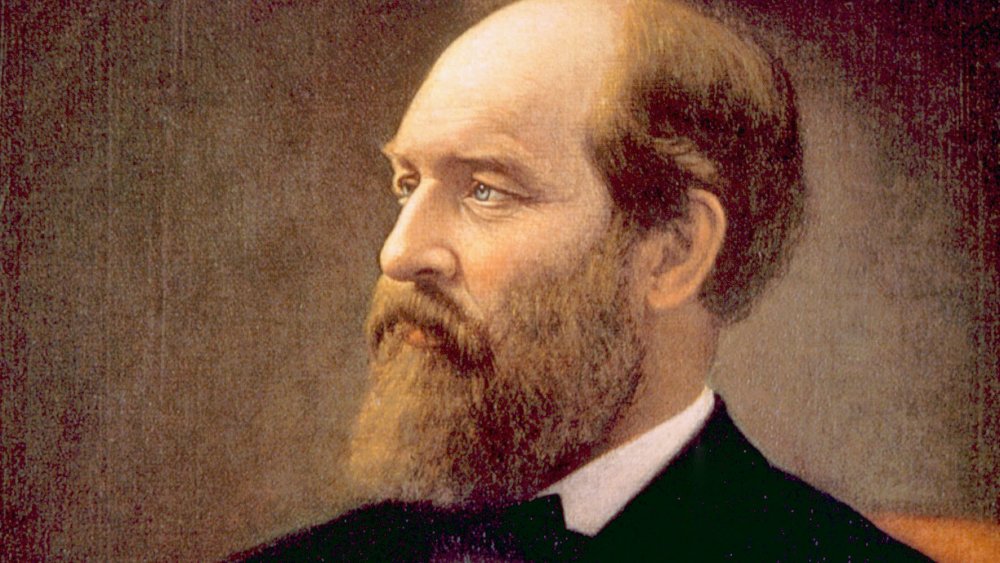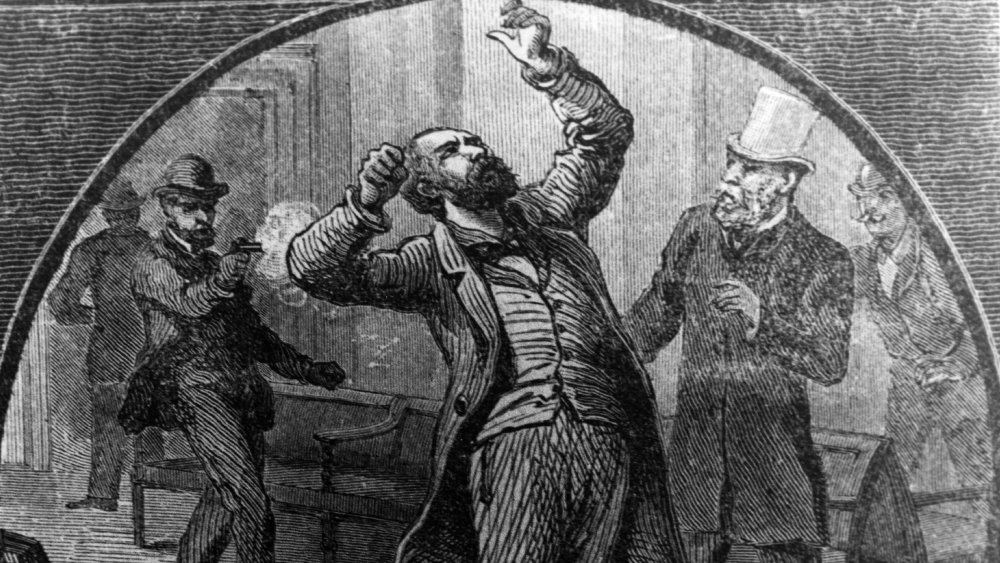The Untold Truth Of James A. Garfield's Assassination
In the 1800s, English poet Matthew Prior wrote a poem titled "The Remedy Worse than the Disease," about being cured of a disease, but accidentally killed by the physician treating him. That was almost certainly true of most diseases and most treatments back then, when many horribly unhealthy things were considered good for you, but it was also true less than 150 years ago, during America's Gilded Age — a time of industrial advances, a soaring economy, and an honest-to-goodness debate about whether or not doctors needed to wash their hands before sticking them into a bullet wound.
We take such precautions for granted now, but back then, "germ theory" was relatively new science (except for the people, including medical personnel, who rejected it) in 1881. James A. Garfield, 49 years old, a robust man at 210 pounds stretched over a six-foot frame, had been elected to the United States presidency the year before, and sworn into office in March. Smithsonian Magazine tells us that on July 2, President Garfield strolled through the train station in Washington D.C., where he was getting ready to leave on a family vacation: At that moment, Charles Guiteau — a writer, a preacher, an attorney, and almost certainly mentally ill — fired two shots at the president.
As recounted by PBS, one bullet grazed Garfield's arm. The second ripped through the first lumbar vertebra of his spine and became stuck in his abdomen. He collapsed, but unfortunately, he didn't lose consciousness. And then, his troubles truly began.
Guiteau fired the shots, but the doctors finished the job
Doctors rushed to care for the wounded president, "care" being defined as "probing for the bullet with unwashed hands and without anesthetic," the same treatment offered President Abraham Lincoln after he was assassinated 16 years earlier. Common medical wisdom of the day dictated that bullets had to be removed, as leaving them in the body led to fatal complications, but germ theory was still hotly contested in the medical community. It wasn't for another 10 years that sterile handling of wounds, including washing hands, became accepted practice.
Too late for President Garfield. Moved back to the White House to try to recover, the president was subjected to repeated attempts to locate the bullet, according to PBS, leading to larger and larger surgical incisions, which themselves became increasingly infected. He wasted away to just 130 pounds. It's hard to be sure, from this historical distance, but scholars believe he developed sepsis, an infection that overwhelmed his entire body. He was transported to his cottage on the New Jersey shore. On the evening of September 19, he was released from his agony, crying out, "The pain, the pain," according to an 1881 historical text compiled by the city of New Orleans, and probably succumbing to a heart attack, as well as massive infection induced by his well-intentioned medical team.
As for Guiteau, he was executed June 20, 1882. "The doctors killed Garfield. I just shot him," he said. He wasn't wrong.

